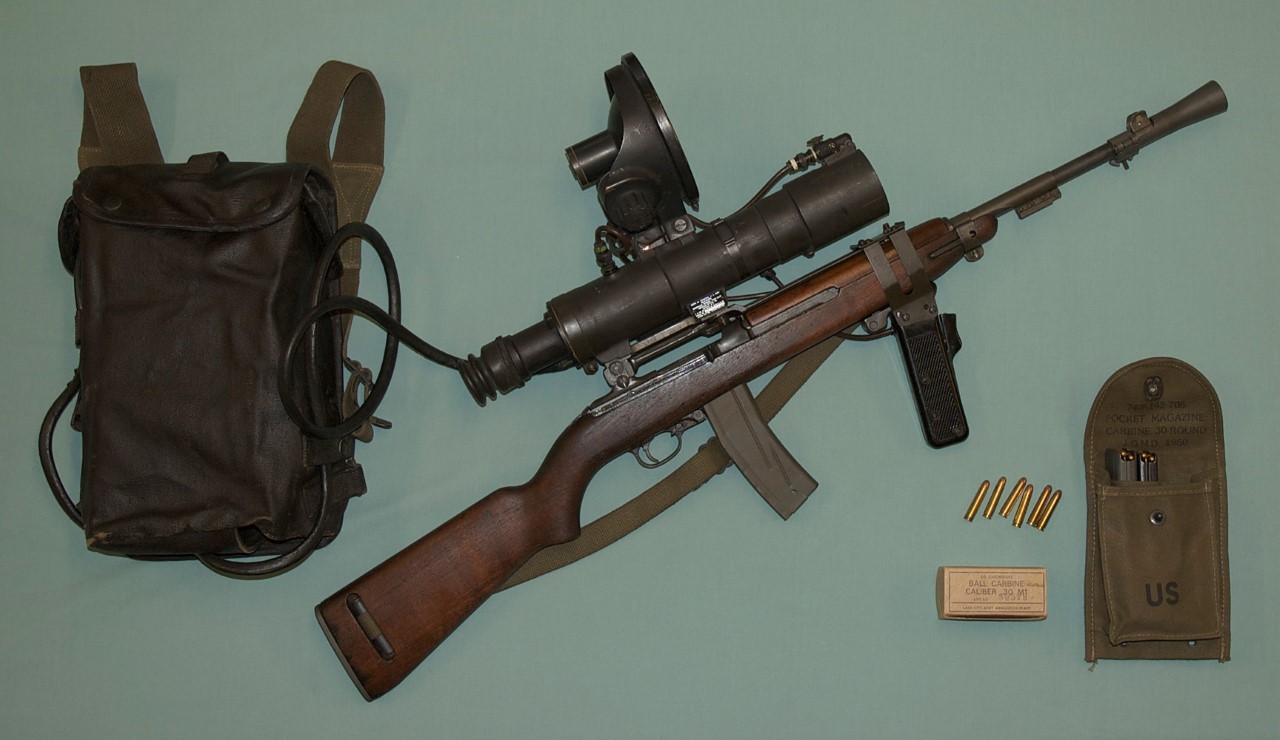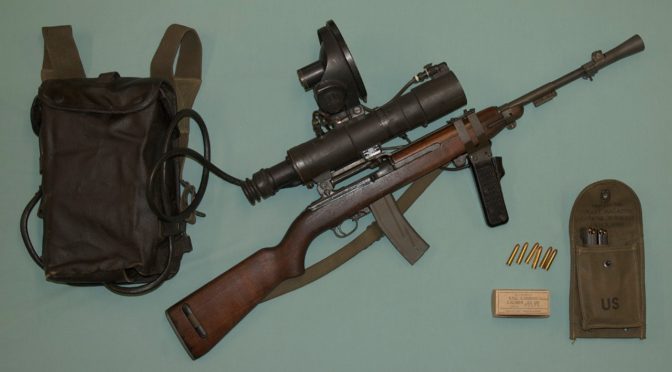Part 1 of 3 : Gen 1 Night Vision Devices (NVD)
by Mark Bunch
I remember as a young man I spent a considerable amount of time hiking, backpacking and camping in the mountains, usually by myself. Getting away from it all and honing my skills of self-reliance at the same time has always appealed to me. Something on a primal level back to my cave man ancestry no doubt, lol.

It has been my experience, that anytime you are completely alone, your awareness and senses go into overdrive, bombarding you with all sorts of new stimuli. At times, this can become overwhelming and I would be lying if I stated that I have never had the hair on the back of my neck stand up when I was deep in the woods all by myself.
Once upon a time, I believe I was 17, I had parked my truck at the base of the Powder Horn Primitive area outside of Gunnison, Colorado. On paper it appeared to be about a 9-mile hike and I got out of my Ford Ranger and began walking. About two hours into it, I had only made about 2.5 miles and was already experiencing leg cramps, not a very good omen. My plan was to make it all the way to the highest of three mountain lakes and camp and fish for a few days.
Another couple of hours and I was about six miles into my 9-mile hike and completely exhausted. My pack was heavy, 80 plus pounds and I was feeling every single ounce of it. I had also picked up a tail at some point and I had no idea whether it was friendly or not. I kind of assumed it was likely a dog someone had abandoned or that had run off and got lost, but whatever it was, it moved when I moved and stopped when I stopped.
Yes, it was unnerving to say the least. Finally, at around 1800 hours, I made it to the third mountain lake, totally spent. I chose not to pitch my tent since I was completely exhausted, so I stretched a tarp between a couple of trees and built a quick fire. Couple canteens full of mountain spring water and full of Top Ramen (yuck) I was lying/dozing off when I heard the crack of a branch being stepped on in the black woods behind me.
I told myself that it was likely an elk or deer walking through and stepping on a branch or at least that was the happy version. That was one of the longest nights of my entire life wondering what was out there in the darkness circling my camp. After a while, it became apparent that I was being stalked by something, wild dogs, wolves, mountain lion – who knows for sure. I never did get a clear look at anything, but I heard numerous low guttural snarls and growls all night long and several times as the growls would get close to me I would have to reposition the fire between me and them.
For those of you Sentinel readers who have had something like this occur, isn’t it amazing how the night swallows up your flashlight beam like it is a bic lighter? That night I had a three D-cell mag lite with me that didn’t shine very far into the deep shadows of that moonless night. I wasn’t completely helpless in the face of whatever was out there, I did have my fixed blade Kabar Marine combat knife and my 1911 .45 acp. I loved my 1911 dearly but I wouldn’t have actually wanted to shoot a charging bear with it, as it has way too many sharp edges on it in case the bear took it away from me and shoved it somewhere tender, lol !
What I really needed that night was a night vision scope so I could have seen what danger was lurking out there in the darkness. U.S. Night Vision Devices (NVDs) have been around since the end of World War II with the advent of the American Military’s first active infrared night vision scope. This first unit utilized a huge dish shaped infrared light transmitter that beamed invisible light out into the darkness that the scope could pick up, thus illuminating whatever you were looking at. Range on these earliest devices was only about 150 yards but they did in fact work. Battery life wasn’t very long, approximately 40 minutes for continuous use, but they would give you a sizable tactical advantage over anyone who didn’t have one of these scopes. This infrared beam was invisible to the naked eye, making it a great tactical advantage in combat.
The German Military beat us to the punch by a full six years, developing their own active infrared night vision scope as early as 1939 with a range of approximately 600 meters by 1943. One of the biggest challenges of these systems were the huge battery packs that were required to power the units, making them difficult to use.
These systems use an anode in conjunction with the cathode to accelerate the electrons. Another problem with that approach was that the acceleration of the electrons distorts the image and greatly decreases the life of the tube. Furthermore, this technology in its original military use was quickly duplicated by hostile nations, which allowed enemy soldiers to use their own NVDs to see the infrared beam projected by the device. Sometimes you will hear active infrared systems referred to as Generation 0 night vision.
Gen 1 Night Vision
Device(NVD)
The next generation of NVDs moved away from active infrared, using passive infrared instead. Once dubbed Starlight by the U.S. Army, these NVDs use ambient light provided by the moon and stars to augment the normal amounts of reflected infrared in the environment. This means that they did not require a source of projected infrared light. This also means that they did not work very well on cloudy or moonless nights. Generation-1 NVDs use the same image-intensifier tube technology as Generation 0, with both cathode and anode, so image distortion and short tube life are still a problem.
Gen 1 NVDs are pretty cheap these days and readers are forewarned that a lot of Russian import NVDs that claim to be Gen 2 and Gen 3 tubes are really only U.S. Gen 1 tube spec. Another problem with Gen 1 NVDs is that they are extremely susceptible to damage from unexpected bright lights such as a searchlight or even car headlights if they are directly into the unit. Even if they aren’t damaged by sudden bright lights, they bloom pretty bad from excess bright light. Range on these units are usually 75 to 100 yards and tube life is only around 1,500 hours.
Affordability sums up Gen 1 NVDs. It gets you some night time capability and obviously some night vision is always better than no night vision. Is it the latest and greatest? No, in fact Generation 1 technology dates back to the early 1960s. That’s when a computer was the size of a small house and 20 plus years before cell phones were even invented. Examples: AN/PVS-2 Starlight scope, PNV-57A Tanker goggles. Gen 1 is hard for me to recommend that anyone actually purchase one of these to defend your life and homestead with, but they are better than having early night vision equipment, lol.
Editor: Part 2 next week: Gen 2, 3 and 4 Night V ision Devices.
The author, Mark Bunch owns and operates Lincoln Park Pawn and Gun and one mile plus gun range with his business partner John Hudson in Cañon City, Colorado. Mark is an NRA certified Law Enforcement Firearms Instructor in pistol, shotgun, police weapons, CMP rifle, Urban Rifle, Sub Gun and Long Range Rifle Disciplines and an internationally recognized long distance competitive shooter. He can be reached via email at: lincolnparkpawn@hotmail.com, rggcpresident@live.com or the old fashioned way via landline at: 719-276-3030.

